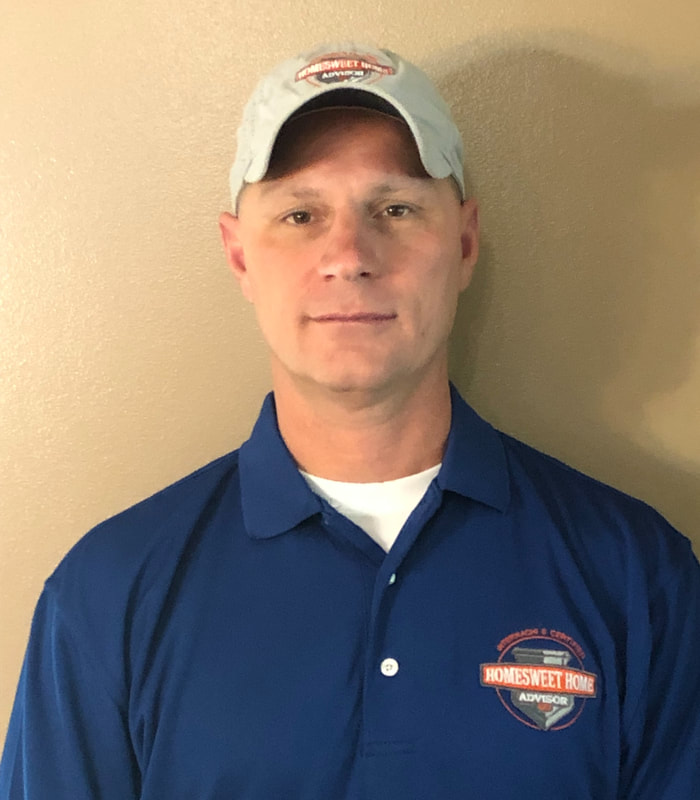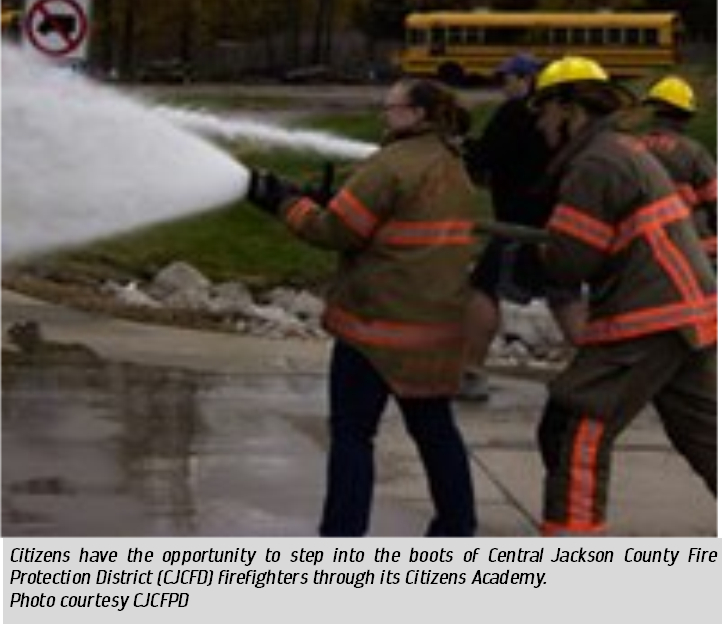|
|
The final days of summer are upon us, and it seemed like just yesterday school was letting out and the warmer weather was here to stay. But in the blink of an eye, students are already heading back to class and much of the scorching temperatures are behind us for another year.
As students gear back up to continue their studies, members of the Missouri General Assembly will be returning to Jefferson City for the annual veto session and an extraordinary session to run concurrently. Veto session is scheduled for Wednesday, Sept. 11. This session allows the General Assembly to reconsider any bills vetoed by the governor from the previous session. This summer, the governor vetoed six bills out of the nearly 100 pieces of legislation passed by the General Assembly during the 2019 legislative session. These include: Senate Bill 147 which contained a partial repeal of the state’s helmet law for motorcyclists. Senate Bill 202 dealing with mining royalties on federal land, which the governor vetoed citing a conflict with federal law. Senate Bill 282 and House Bill 447 dealt with the disposition of human remains and coroners respectively. Both were vetoed for containing provisions allowing for outdoor cremations, also known as “Viking funerals.” Senate Bill 414 which created a taskforce seeking a waiver to change the Affordable Care Act. Without an emergency clause allowing the taskforce to immediately go to work, the governor did not believe it would have enough time to conduct its work. He has since created the taskforce through an executive order. House Bill 399 was vetoed due to additional requirements and restrictions to the Department of Health and Senior Services director position. Much of the bill’s other provisions were passed in other bills and signed into law. The General Assembly can take up any of these bills and attempt to overturn the governor’s veto. If both chambers agree, the legislation will become law, otherwise it will remained vetoed. I do not anticipate the General Assembly overriding the governor’s actions on any of these bills. Additionally, the governor announced on Aug. 21 that he was calling the General Assembly back for an extraordinary session to address a recent Missouri Supreme Court decision regarding vehicle tax credits. In June, the Missouri Supreme Court ruled only one vehicle could be sold and used as a credit to offset the sales tax for a new vehicle. Previously, it was thought the existing state statute allowed multiple vehicles to be used to offset the sales tax for a new vehicle. Two differing rulings by the Missouri Administrative Hearing Commission (AHC) only added confusion to this matter and spurred the Supreme Court’s ruling. The governor called on the General Assembly to clarify this issue and help save Missourians some of their hard earned money. This will also allow the Missouri Senate to consider appointments to Missouri’s various boards and commissions. The extraordinary session is slated to begin on Sept. 9 and run concurrently with the General Assembly’s annual veto session. You can see, there are several important issues for the General Assembly to consider in the coming weeks, and I look forward to getting back to work. Lastly, I wanted to make you aware that the Missouri Humanities (MH) has announced its second initiative to expand its African American Heritage partnerships and programmatic reach. MH is inviting organizations across the state to apply for funding assistance for African American Heritage programs during the 2020 calendar year that increases our understanding of the African American experience through public programming in the humanities. For funding guidelines and an application, please visit https://www.mohumanities.org/african-american-heritage/. The application deadline is Oct. 15, 2019, with award notification expected by Dec. 14, 2019. Please feel free to contact my office in Jefferson City at (573) 751-1464. For information about committees or sponsored legislation for the 2019 session, please visit my official Missouri Senate website at senate.mo.gov/Cierpiot. As outlined in the project approach narrative by CFS Engineers, Grain Valley residents voiced their desire in 2009 that walking trails were their most desired recreational amenity. Citizens requested pedestrian connectivity. Connecting neighborhoods to parks, schools, businesses, and amenities. The pedestrian bridge that will be constructed over Blue Branch Creek will serve as a link in providing these connections and will be a component in the City’s overall integrated trails system. Blue Branch Creek is a natural barrier that separates the Cross Creek neighborhoods along Sni-A-Bar Drive from the schools, parks, and shopping districts. Construction of the bridge will connect the neighborhood with Cross Creek Nature Park, Grain Valley Public Schools Campus (Sni-A-Bar Elementary and Grain Valley High School) and will facilitate improved pedestrian connectivity to the shops at Old 40 and Buckner-Tarsney as well as to Downtown Grain Valley. Shannon Davies is the Parks and Recreation Director for the City of Grain Valley. He was part of the team to apply for the grant that will help bring the pedestrian bridge to Blue Branch Creek. “We received funding in the amount of $119,215 from the Transportation Alternatives Program (TAP) through the Missouri Department of Transportation (MODOT). Myself and former Community Development Director Rick Arroyo completed the application and attended several meetings at the Mid America Regional Council (MARC) to present and provide justification on the need for this project. MARC is the organization that reviews all applications, scores them, and makes recommendations to MODOT for funding. Ours was not only one of the projects selected, but we received full funding whereas other projects may receive only partial funding,” Davies said. “These TAP funds are specifically designed for the pedestrian bridge, not for the trails that will connect to the bridge. The bridge will be prefabricated and trucked-in on flatbed and then cranes will put the bridge sections in place. Prior to that, we will need to clear that area, construct the bridge abutments, and ready the site for the bridge itself. That’s what the TAP funds are earmarked for.” The trail construction along Blue Brach Creek has begun. The network of adjacent trails to Blue Branch Creek will be phased in over the next 3-4 years. The recreational trails will be ten feet wide with an asphalt surface. The following is the timeline provided by Davies for all three phases. Phase I (2019) Completion of a stretch of trail a little over one mile in length. This section will run parallel and on the north side of Blue Branch Creek. It will connect to the existing sidewalk on Buckner-Tarsney Road (providing pedestrian connectivity to the downtown corridor) and then extend west all the way to SW Eagles Parkway. Phase II (2020) Installation of the pedestrian bridge over Blue Branch Creek to connect to the Phase I trail on the north side of the creek. In addition to trail construction that will provide connectivity to the Sni-A-Bar Farms neighborhoods on the south side of the creek. We are working with the school to see how/where we can connect this trail to their property that currently houses the high school campus and Sni-A-Bar Elementary. Phase III (2021-2022) Trail connectivity to the Sni-A-Bar Farms property that is currently owned by the City. Blue Branch Creek Bridge Project Plan. Image credit: City of Grain Valley
 Larry Baker is a Certified Professional Inspector for Home Sweet Home Advisor. The fifteen-year resident of Grain Valley officially started his new business on January 1st of this year. Baker had several things he was looking for as the next part of his career got underway. He was interested in applying his degree in Safety Management from Central Missouri State University along with something that would allow him to be up and active. Previous stints of employment at a meat packing plant, human resources department at a local municipality, and the Chief Safety Officer for the Kansas City Metropolitan Transportation Authority have provided Baker with valuable experience on the relationship side of working with people along with accomplishing safety goals. Two of his past roles ending through reduction in force led Baker to wanting build something of his own. Part of Baker’s transition into the home inspection market included working for his brother’s construction company prior to establishing his new business. Baker wanted to gain hands on experience so that he would be better versed in what he was going to face and must explain in his new endeavor. He undertook learning carpentry, roofing, and painting so that his knowledge base expanded past safety. Home Sweet Home Advisor encourages people to understand that their home is typically the biggest purchase you’ll ever make, so it’s important to understand the condition of your investment. The company prides itself having certified Professional Inspectors trained by InterNACHI – the International Association of Certified Home Inspectors as well as certified Real Estate Inspectors trained by ICA – Inspection Certification Associates. The company’s goal is that their inspectors have the knowledge to spot problems with materials, installation, and workmanship. Baker has attained both certifications. Baker is pleased with the accomplishments of his new business as well as the challenges, or opportunities as he positively refers to them. “I enjoy interacting with people. I enjoy explaining the process of what I’m doing. Sitting down with people at the end of an inspection and starting with what’s good about their house is nice to hear, especially if you do have to inform them of something negative regarding their home,” Baker said. “Marketing a new business is the biggest opportunity I think that a small business owner may face. Using social media to your advantage, making connections in your industry such as getting to know realtors are important elements.” A Home Sweet Home Advisor standard home inspection will include the structure, systems, and components of the home, inside and out, from the foundation to the roof, using the latest tools and technology. The company also encourages you to attend your inspection so that they can describe the process, explain their findings, point out important maintenance items, and answer all your questions. Baker considers the HVAC system to be the heart of the home and emphasized its maintenance as one of the best things you can do to protect your investment. “Changing your filter regularly, along with having your unit inspected and cleaned annually can make a big difference since a new HVAC system typically runs between four to six thousand dollars. Preventative maintenance may help HVAC units last twenty years,” Baker said. You may contact Larry Baker of Home Sweet Home Advisor at 816-805-4191 or [email protected]. Larry Baker, Certified Professional Inspector for Home Sweet Home Advisor encourages people to understand that their home is typically the biggest purchase you’ll ever make, so it’s important to understand the condition of your investment.
Photo credit: Home Sweet Home Advisor Representatives from Baker Tilly, a tax advisory and assurance firm returned to present to the Grain Valley Board of Alderman upon their request on Monday, August 26th. The purpose was to provide tax analysis on two different scenarios regarding tax rates. The first column presented to the Board was the current flat levy showing the total taxes that were collected for this year at the rate of 1.6294. The second column was an eight-cent rollback of the current tax levy for 2019 that the board had requested more information on during the original presentation by Baker Tilly during their August 12th meeting.
The two choices were presented to the Board in an effort to determine what route they wanted to take for a debt service payment to be made in 2020. The board would be able to make a payment of $1.3 million if they choose to keep the current flat levy rate. The other option of an eight-cent rollback of the current tax levy would allow for a $1.1 million payment. The escrow payment would be for paying down debt. The goal of the Board was to determine how to proceed as financial stewards to best prepare funding for the planned municipal complex at Sni-A-Bar Farms on Buckner-Tarsney Road. Consideration was being given to determine which plan would be best for the determined bonding capacity the city possesses if they approach the community next year with a no tax increase bond to fund the planned Sni-A-Bar Farms facility. An eight-cent decrease in the levy rate would reduce projected bonding capacity for the planned facilities to just under five million dollars. Baker Tilly stated that they understood from city staff that funding for the facilities could be between the $40 to $60 million range. The spokesman for Baker Tilly indicated the city would be able to pay for approximately half of the project with current levy rate and less than half with an eight-cent rollback. Mayor Mike Todd, Finance Director Steven Craig, and Deputy City Administrator Ken Murphy all participated in discussion with the Board on what action would be feasible. Mayor Todd offered that his opinion was some type of tax decrease would be appropriate. That would allow for city leadership to say to voters that the tax rate had been decreased two years in a row (with a ten-cent tax decrease the prior year). Craig asked the Board to weigh the cost of the proposed facilities project being significant if a decrease in rate was proposed. The reasoning being that a decrease in rate would result in less money being available for the facilities project that Craig stated the Board wanted to be the best available for the citizens of Grain Valley. Murphy cautioned that if there was not enough bonding capacity then the city would have to start looking at phasing. That the initial phase would be cheaper, but the overall project cost would go up. Todd proposed after discussion that a three-cent decrease be considered. City Administrator Ryan Hunt stated the recommendation would be brought before the board at its next regularly scheduled meeting. In other news, Hunt was recognized for receiving his ten-year service pin with the City of Grain Valley on his August 17th work anniversary. The next Board of Aldermen meeting will be held at 7:00 pm on Monday, September 9th at City Hall. by John Unrein Distance running makes you compete against yourself as well as opponents. Ignoring pain, sweat, and negative thoughts are a constant along with finding the confidence to make a move when running during a vital part of a race that spans five kilometers (3.1 miles). How one trains and the relationships they forge with their teammates and coaches helps determine whether goals may be reached in a grueling sport. Approaches that high school programs take for cross country workouts may vary. Some may do progressive runs across long distances. The idea being you go at a moderate pace during the first half of your run, only to increase the speed and intensity during the second half. Progressive run training has been associated with building the capacity to pick off opponents as a race progresses. Interval training is another workout method where runners perform at a high-speed intensity for a defined period (perhaps a mile) followed by a short recovery span before repeating the process. The idea being that a runner increases their speed and stride efficiency by doing repeated intervals with high intensity during training. Tempo runs are yet another model for distance running training. You try to find a tempo to run at that’s slightly slower (perhaps 15 to 30 seconds) than your race pace. Tempo runs are difficult without leaving you feeling completely exhausted afterwards. Andrew Meyers of Crunch Fitness in Arizona describes tempo running as targeting metabolic fitness. The higher intensity builds greater lactic acid thresholds according to Meyers, which means you shouldn’t fatigue as quickly come race day. Grain Valley High School Boys and Girls Head Cross County Coach Nick Small believes that race training for the student athlete has really started to evolve in the 21st century. Small cites using values that weren’t readily available in the past such as heart rate as being huge. “Nowadays kids have watches that in real time can tell them what their heart is and it’s a good indicator of where they are at on a given day with all factors added in. Whether that be the outside temperature, how much they ate, how much they slept, their heart rate is going to tell them how hard they’re working,” Small said. “We’ve tried to slowly move into heart rate training. It allows us to get specific with each individual student athlete in being productive with their running. If I tell our group that I need them running at a seven-minute mile pace, that may be anywhere from taxing to easy for each individual in the group. Instead, telling them a heart rate range hits their individual target.” The Eagles Cross Country programs has also found a weekly schedule that works well for them in season. The teams meet on Sunday night and does a long run. Monday then becomes an off day. Tuesday is a training run of a shorter length. Wednesday is a workout day that cycles through a menu of activities. Thursday is a recovery day and Friday is a pre-meet training day. Small likes that kids have a protected day of rest that allows them to seek tutoring and take care of academic needs as well. “We meet Sunday night because research shows after a race on Saturday, the next day is important to get junk out (lactic acid, etc.) of their legs through activity. I also like that our kids have a mental and physical break on Monday away from the sport where they can put their focus on any learning need in the classroom they have,” Small said. Small also tries to individualize the amount of mileage that runners put on their legs based on ability to best suit their needs. The goal being to maximize potential while protecting participants from injury. “We are by no means a high mileage program. The focus is how do we attain quality miles. When intensity ramps up, then the mileage needs to come down to avoid injury. We have found in the past that certain kids may need extra mileage, while others need less mileage and more intensity,” Small said. “It’s about evolving to find what works best for the four to six years (if they run during middle school as well) each student is with us. Right now, at the peak of what we’re doing, some of our kids are hitting sixty to sixty-five miles a week.” Senior Jaxson Jarman and Junior Valerie Holcomb both agreed about the family bonds they have formed as the thing they enjoy most about participating in Cross Country. “I enjoy the memories I am making with my teammates. Some of the friendships I have made with my teammates will be lifetime bonds. They extend past just cross country,” Jarman said. “I would have to agree with Jaxson. The atmosphere and family bond that exists with the girls and guys teams brightens your day,” Holcomb said. Each of the upperclassmen has also put some thought into goals that they want to accomplish this season. “We want to make it past sectionals and have our eyes set on state. My personal best time last year was 17:59. I want to get into the high sixteens or low seventeens with a new best time. I am setting some high goals for myself. You must be mentally tough in this sport. It’s going to be hard to compete if your mind is not focused as your body breaks down. I don’t want to disappoint my teammates,” Jarman said. “I really want to improve on my mid race which is a point where you tend to break down. The girls team runs in a pack this year. You have to tell yourself that you’ve gotten this far, and you need to keep going. The second mile mark tends to be where you start to see the separation gaps grow. You have to stay on the hip of your teammate and go when the choice is made to make your move in the race. We run for each other,” Holcomb said. The Eagles Cross Country program will partner again with Susan G. Komen for the Cure Foundation during Breast Cancer Awareness month. October 5th will be the Sock it to Breast Cancer meet. “Uniforms will have pink accents to promote awareness and we are partnering with host-a-program with health professionals coming out to collect donations and sell ribbons for fund raising to promote cancer awareness and help us give back,” Small said. The Grain Valley High School Cross Country programs will have their kickoff meet at Grain Valley North Middle School on Saturday, August 31st. Left to Right: Senior Jaxson Jarman, GVHS Head Cross Country Coach Nick Small,
and Junior Valerie Holcomb. Photo credit: Valley News staff by Marcia Napier, Grain Valley Historical Society In Pearl Wilcox’s book Jackson County Pioneers, we find on page 81 the following excerpt:
“Bad feeling due to the (Civil) war still existed and sometimes precipitated quarrels and fights between (Pink Hill) neighbors. Many of the men had engaged in guerrilla warfare; some were Confederate veterans restored to citizenship and full rights; others returned Union men. Old feuds flared. One night in the fall of 1871 during a service in the unfinished Methodist Church, three men lost their lives in a shooting scrape. Elijah Gardner, Robert St Clair and Grandville Love were killed.” Some corrections are necessary. Gardner’s first name was Elias. He died on February 24, 1869. Originally buried in the Gardner Family cemetery, his grandson had the graves of Gardner and his wife moved the Buckner Cemetery. Robert St Clair died on April 10, 1869. He is buried in the St Clair Cemetery on Holloway Road. Love’s first name was Granville without the “d,” and he was the only one shot at the Pink Hill Methodist Church. He was shot in his leg and died from his wound. He is buried in the Oak Grove Cemetery. Having visited all three gravesites, I can attest to the accuracy of the names and dates IF the tombstones are correct! According to an account I located on Ancestry.com, Gardner was born in Kentucky in 1816. The 1850 US Census listed his residence in Kentucky; however, by the 1860 US Census he owned a farm in Jackson County, Missouri, presumably near Pink Hill. A family researcher related that Eli Gardner was drinking in a saloon after the Civil War. An argument broke out between he and his friend, Lewis. Gardner’s first shot took off Lewis’ hat and his second shot hit Lewis in the chest and killed him. Robert St Clair, a prominent man in Pink Hill, attempted to stop the argument. He was shot in the arm which had to be amputated. He died a few weeks later from gangrene. Gardner said he had killed one man and he would kill others who provoked him. A posse led by Young Keasler arrived at the Gardner home where Eli had fortified himself in a barn and refused to surrender. He shot Keasler but eventually Gardner was shot and killed. George A. Gardner, 18-years old at the time, witnessed the killing of his father. Two years later on September 16, 1871 at the Pink Hill Methodist Church, Gardner challenged Keshlear and both men were wounded by gunfire. Granville Love, a bystander was shot and later died from his wound. This resulted in a complaint by the citizens of Sni-A-Bar Township against carrying of firearms. The protest read: “We, the undersigned, citizens of Sni-a-bar township, Jackson County, Mo. deeply regret the homicides lately committed in our township, by which Elisa Gardner, Robert St Clair and Granville Love lost their lives; and believing that no justifiable cause existed for any of the said homicides and feeling it is our duty, as peaceable and law-abiding citizens, to do all in our power to prevent any future occurrences of the same sad and disgraceful character. We hereby enter our solemn protest against the practice of carrying pistols and other deadly weapons in a peaceable community—believing as we do, that no necessity exists for any man to so arm himself…..and abandon habits which only produce evil and immorality…..” This protest was signed by 99 citizens. Obviously, outlawing guns is not as easily done today. Media convergence is a popular buzz word. Encyclopedia Britannica defines it as “a phenomenon involving the interconnection of information, communication, and media content through computer networks.” Magazines, newspapers, television, and movies all blended into one package accessed via the internet with your computer, tablet, or smart phone. Grain Valley High School has embraced stepping into the 21st century with Grain Valley Television. Teachers Michelle Kennedy and Marcee McElwain are the facilitators guiding students through their hands-on learning experience. GVTV is entering its third year of doing print and broadcast out of the same classroom with the same group of students. “I went to a journalism convention four years ago in Indianapolis. I sat in on some workshops with innovative educators who were involved in convergence. I was taught print journalism. Period. When I came home, I met with Marcee McElwain, our broadcast and video teacher. This brainchild came from her and I feeling that students deserved better (not being isolated in different media classrooms),” Kennedy said. “We’ve had a couple of our students go on to Mizzou’s journalism school. They are teaching convergence there as well. All the conversations I’ve had with professors at the journalism department in Columbia said that this was the current trend. They affirmed that getting students to learn InDesign as well as Adobe Premier for making videos, writing print pieces, and learning to promote through social media their stories would be a good thing. It puts them a step ahead or other students who enter journalism at the college level who have not been taught both sides.” Several things become noticeable upon visiting the GVTV classroom. Students are involved in collaboration, using technology, learning from mistakes, and are responsible for completing their roles with guidance more than direct instruction. The learning environment that has attracted both genders to the program. “The thing that makes this classroom attractive to both student genders is the merge that has taken place. The video class use to be predominantly boys. My journalism class use to be slanted towards girls with only a few boys in the class. We have found that both groups of students have enjoyed everything from being on air, and editing, to writing and taking photographs. Students are learning that they don’t have to be typecast to just one thing. They are growing in understanding they can be good at something they’ve been told that they wouldn’t necessarily be good at,” Kennedy said. Students within the GVTV program describe it as news in the hands of students through peer interaction. Members of the class enjoy trying to get the news out in a fun and entertaining way to capture the audience’s attention through humor and information. Seniors Jackson Sallee and Gavin Oyler shared their thoughts on what its like to be a part of the class. “Our sports broadcasting program that started last year has become productive. I feel we have some quality content that’s making its way to live streaming. I think taking over sports from the NFHS Network, which is a paid subscription, will make sports more accessible to our viewers for people who can’t always make it to the game because they can watch it on YouTube,” Sallee said. “People are starting to recognize the name of the program around town. The other day we posted our new intro and before I got home my Dad had texted me to tell me it was funny. This comes with pressure. If you slack off and don’t get your work done, people will notice because it’s assigned to you. This is a workplace type atmosphere where there are deadlines and it exposes you to adult life,” Oyler said. GVTV is also learning how to take on challenges that come their way. Pushing to get a weekly show broadcasted is not without growing pains. Finding time to publish an equal amount of content compared to what’s done on the television side is a balancing act. The skill of time management gets used frequently in trying to balance quality with quantity in what gets produced. Exposing students to their field outside of Grain Valley is an area Kennedy is passionate about. “I’ve been really fortunate. I get to share my love for journalism with my students. Being able to expose them to things outside of Grain Valley is one of the biggest gifts that I’ve been given. I get to take them to places like MU, Action 41 News, and the Kansas City Star. This fall will be our fourth year that we’ve gotten to take students on a trip. We are going to Washington D.C. This opportunity would not be possible without the support of my administration and our district,” Kennedy said. Memories for students that last forever along with impressionable lessons are the goals of Kennedy and McElwain with venturing outside of Grain Valley. The class is trying to pick up sponsors for live television broadcasts as well as Eagle TV weekly. Interested parties may contact Mrs. Kennedy or Mrs. McElwain through their Grain Valley School District email address. Grain Valley Eagle Media Staff Introduction for 2019-2020: https://www.youtube.com/watch?v=sHw0vNVHPHo GVTV News Staff (left to right): GVHS teachers Michelle Kennedy, Marcee McElwain, sophomores Jordan Casey and Aden Gilette. Photo credit: Valley News staff Students at work in GVTV classroom. Photo credit: Valley News staff Left to right: Seniors Gavin Oyler and Jackson Sallee are a part of the GVTV staff.
“This is a workplace type atmosphere where there are deadlines and it exposes you to adult life,” Oyler said. Photo credit: Valley News staff by Marcia Napier, Grain Valley Historical Society If you are looking for the Historic Slaughter Family Cemetery, it is located in the northeast corner of Swan Lake Memorial Gardens, 3105 S. Slaughter Road.
Josiah and Elizabeth (Koger) Slaughter were married on April 19, 1826 in Patrick County, Virginia. According to the 1840 U. S. Census, they were living in Sni-A-Bar Township with their six children. Their daughters were Sarah (Cox), Mary Jane (Harris), Sinea E. (Potts) and Elizabeth M. (Gibson), The two middle girls married cousins and moved a few miles south to the Stony Point area. They lived on adjoining farms on Harris Potts Road. The Slaughter’s younger son, William Ryland moved to Salisbury, Missouri. The older son, John Henry married Mary Jane Bowman in 1867. He purchased land adjoining his parent’s property and to the south. The Historic Slaughter Family plot is probably on the land owned by Josiah, as the first grave in the cemetery was that of Mary Koger, his mother-in-law who died in 1845. Josiah, Elizabeth, Sinia and Levi Potts, John, Mary Jane, and their two infant children are buried at the cemetery. Also buried there are Robert and Melinda (Stringer) King. They were the parents of Sarah Catherine King, better known as Kate Quantrill, wife of William Clarke Quantrill. Kate was only 14-years old when she met Quantrill. He and his raiders, numbering some 100 men. were camped at a small spring on her family’s farm (northeast of Blue Springs). She left with him, and they lived mainly in tents for the brief time they were together. After one of the groups more infamous raids, when they burned Lawrence, Kansas, Quantrill left and went to Kentucky. Kate went to St. Louis. When Quantrill was shot, Kate joined him in Kentucky and was with him when he died. They were married only three and a half years. Kate was seventeen. Like Quantrill, she had taken his middle name, Clarke, to avoid being recognized during the war. In the 1870 U. S. Census, Kate Clarke was living in St. Louis. She was 22- years old and her listed occupation was “whore.” She ran a high-end business in Old St. Louis for several “successful” years. After the birth of a son, she moved to Oklahoma where she purchased a “ligament” hotel which she ran for many more years. Kate was married three or perhaps four more times. Eventually Kate returned to Jackson County and lived with a nephew, Authur Dealy until she was quite elderly. She was put in the Jackson County Home for the Aged, commonly known as the Old Folks Home or the Poor Farm. A newspaper article mentioned she was buried in an unmarked grave at the Maple Hill Cemetery in Kansas. A marker was place there within the last 25 years. In 1971, a marker appeared at the Slaughter Cemetery, next to the graves of her parents. It was erected by Arthur Dealy and Fred Ford, a neighbor of Dealy. According to their story, when Kate died a local mortician with the Ketterlin Funeral Home had contracted to bury paupers from the Poor Farm in Maple Hill Cemetery. The body was embalmed, but the mortician suddenly moved to the Ozarks and left the funeral home full of embalmed bodies. A month passed before Kate’s family was notified. When Dealy learned she had not been buried, he and Ford retrieved the body and brought it to the Slaughter Cemetery to be laid to rest by her parents. The more one reads about Kate King, the more confused you might become. Was she ever married to Quantrill? While she did live with a nephew near the end of her life, some say it wasn’t Dealy. In fact, some writers do not believe they were even related. In all likelihood, she is buried in Kansas, but then again…. You can visit the Old Slaughter Cemetery and see her memorial gravesite. Visit the Grain Valley Historical Society online at www.grainvalleynews.com and on Facebook at @grainvalleyhistory. CBD American Shaman, specializing in CBD oil products from industrial hemp for alternative health remedies, has opened at 1402 SW Eagles Parkway, Grain Valley. Owners Karen and Darwin Keesee, DC, opened the location in Grain Valley after witnessing the benefits of CBD products in helping individuals with a host of health problems. Darwin Keesee is a chiropractor and Karen Keesee is an occupational therapist. “Pain, anxiety, depression, and trouble with sleeping are just a few of the conditions customers come in to seek help with,” co-owner Karen Keesee said. Products include water soluble oils, edibles, vape products, bath bombs, eye serums, and massage oils. The store also carries a line of products for pets, addressing anxiety and joint pain issues. According to CBD American Shaman, taking or using a CBD enriched product can enhance your body’s ability to maintain balance and manage physical and emotional stress. The company claims CBD to have many therapeutic properties and states it is particularly effective for maintaining focus, offering pain management and helps in recovery from conditions. Customers come to American Shaman either from a medical recommendation or individually, seeking solutions for a variety of conditions. A comfortable seating area greets customers as they arrives in the store, and staff are ready to work with customers to find the product that will work best for their situation. “Our staff is really knowledgeable. We’ll talk individually with each person who comes in so we can best help each person and find a product that works for them,” Karen Keesee said. Visit CBD American Shaman on Facebook at https://www.facebook.com/grainvalleybotanical/ or by phone at 816-726-4615. CBD American Shaman is open Noon—6:00pm on Sunday, 10:30am—7:00pm Monday—Saturday. For more information on CBD American Shaman and to shop online, visit https://cbdamericanshaman.com/. Sponsored advertisement. CBD American Shaman celebrated its grand opening August 15th with members of the Grain Valley Partnership. Pictured front center (left to right): Ben Keesee (in white shirt), Karen Keesee, Darwin Keesee, and Jennifer Lucas. CBD staff not pictured: Austin Fansher. Photo credit: Valley News staff CBD American Shaman, located at 1402 SW Eagles Parkway, sells a variety of CBD oil products from industrial hemp for alternative health remedies.
Photo credit: Valley News staff For the average resident or cubicle dweller, the sight of firefighters running to a call, climbing ladders, and cranking out a fire hose makes a firefighter’s daily duties look endlessly exciting. Central Jackson County Fire Protection District (CJCFPD) is offering residents the opportunity to walk a mile in their boots through their Citizens Academy.
The Citizens Academy, first held in June 2014, is a free program designed for citizens who live or work in the CJCFPD’s protected areas who have a desire to learn about fire service. Through interaction with firefighters and paramedics, classroom discussions, and hands-on skills, participants gain insight into the life of a firefighter. Classes meet on September 10, 12, 17, 19, and 25 from 6:30pm to 10:00pm and September 28th from 9:00am—5:00pm. Applicants must be at least 18 years of age and live or work within CJCFPD’s service boundaries. Registrants are asked to commit to attending all sessions. The Citizen Fire Academy is limited to 20 students and registrants are accepted on a first-come, first-served basis. “We never make anyone do something they are not comfortable with. It is neat to see people take on their fears, such as the fear of heights. We allow students to ride our platform with the ladder truck and we always have those that say they never will, but by the end of class, they have done it,” CJCFPD Captain Derrick Llewellyn said. To register for the program, email [email protected] or call 816-229-2522 and ask for Captain Derrick Llewellyn. |
Categories
All
Archives
July 2024
|
Grain Valley NewsGrain Valley News is a free community news source published weekly online. |
Contact Us |












 RSS Feed
RSS Feed
